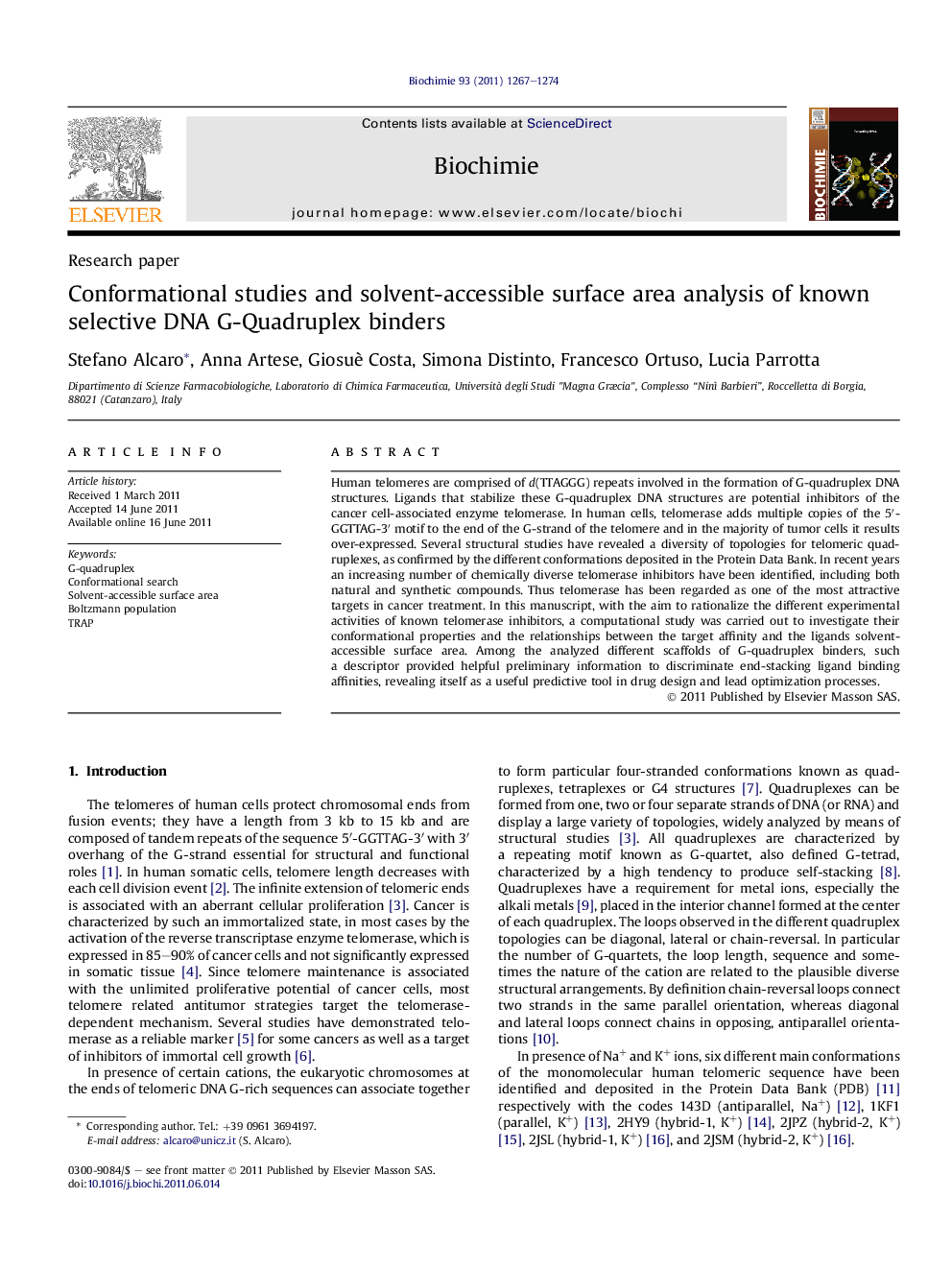| Article ID | Journal | Published Year | Pages | File Type |
|---|---|---|---|---|
| 1952477 | Biochimie | 2011 | 8 Pages |
Human telomeres are comprised of d(TTAGGG) repeats involved in the formation of G-quadruplex DNA structures. Ligands that stabilize these G-quadruplex DNA structures are potential inhibitors of the cancer cell-associated enzyme telomerase. In human cells, telomerase adds multiple copies of the 5′-GGTTAG-3′ motif to the end of the G-strand of the telomere and in the majority of tumor cells it results over-expressed. Several structural studies have revealed a diversity of topologies for telomeric quadruplexes, as confirmed by the different conformations deposited in the Protein Data Bank. In recent years an increasing number of chemically diverse telomerase inhibitors have been identified, including both natural and synthetic compounds. Thus telomerase has been regarded as one of the most attractive targets in cancer treatment. In this manuscript, with the aim to rationalize the different experimental activities of known telomerase inhibitors, a computational study was carried out to investigate their conformational properties and the relationships between the target affinity and the ligands solvent-accessible surface area. Among the analyzed different scaffolds of G-quadruplex binders, such a descriptor provided helpful preliminary information to discriminate end-stacking ligand binding affinities, revealing itself as a useful predictive tool in drug design and lead optimization processes.
► We have modeled a set of known G-quadruplex binders. ► A new molecular descriptor, BASASA, was developed and applied. ► The comparison of BASASA and TRAP data demonstrated a good level of correlation. ► BASASA is proposed as new design tool for end-stacking DNA G-Quadruplex binders.
